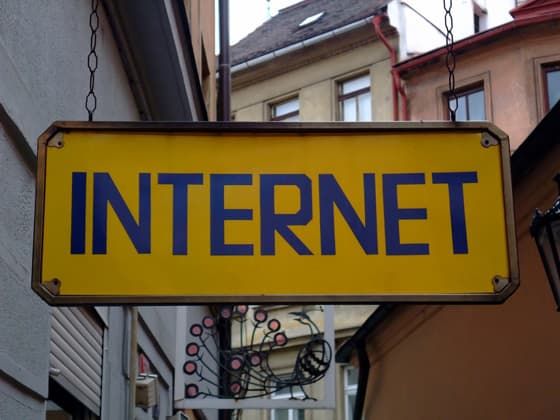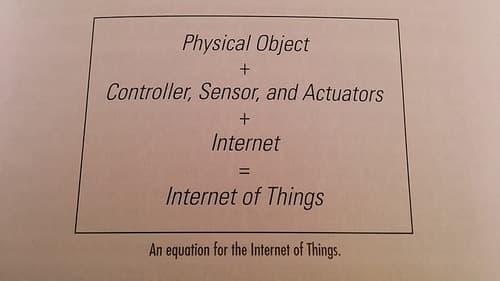What “Internet of Things” Is All About?
The term Internet of Things refers to a computing concept that everyday things, including physical objects can connect to the internet and harness data by connecting processes and people to facilitate business processes. This is done by correlating these objects and other internet-enabled devices/systems. The whole concept of internet connectivity has changed with the advent of IoT, and goes beyond desktops, laptops, tablets and smartphones. What it means is that it is now possible to connect people and devices to a scale that was unimaginable till a few years ago. The following are reasons for this surge in the Internet of Things (IoT) concept:
- Growth of cloud computing
- More and more machines and devices are getting connected to the internet
- A definitive proliferation of applications that allow supply chains, customers and partners to be connected.
Why IoT matters a lot
With shrinking product cycles, shortening production chains and rising competition, businesses need to adapt to regulatory requirements and continue to innovate. If there are people and infrastructure already at work in your company, then it is the simple matter of leveraging them to expand them by enabling innovation. There are companies like Microsoft and Cisco who provide assistance to integrate data and assets to improve your digital presence. So with these services, it is possible to collect, processes, assets and even people across your business, while at the same time monitoring them to drive operational performance and increase efficiency. By outsourcing their data collection services, these businesses can leverage professional quality data analytics to introduce new business models.
More reasons on why IoT is making such a strong impact:
- Falling hardware prices
- Machines are able to talk with each other in a much more intelligent manner
- The rich dynamics of most softwares make it possible for larger connectivity
- In the beginning, connectivity was limited to local networks, but now it is proliferating
- McKinsey Global Institute says that by 2025, IoT will have the power to create an economic impact of $2.7 trillion to $6.2 trillion every year
Capitalizing on the trend of IoT
These days you cannot just afford to simply run your business, it is important to make it thrive. Here are some strategies that would help you stay at the forefront:
- Making small changes and improving efficiency
You can use IoT to get connected and monitor the health of your business. It is estimated that by 2018, the cost incurred for running a business would actually be reduced by 30%, thanks to the integration of smart machines and their connectivity. With IoT, it is possible for businesses to know when action is needed about anything in particular so they can improve business processes - It is possible to connect a diverse line of business assets
With the rapid proliferation connectivity is making, it is possible to connect a lot of devices even though they work through different protocols and a variety of platforms. Companies that provide IoT services would be able to help you to capitalize on data from a huge number of systems at one go. - Build on what you already have
Companies that provide reliable services would help you build on existing technology and infrastructure, rather than buy new ones. - It is really the Internet of your Things
Rather than getting confused on the real functions of IoT , it would be easier for you to relate to this concept when you think about your business and the factors involved in it. You can think about your assets, infrastructure, softwares, cloud, devices and sensors. Connecting these through this concept would help you make informed decisions and identify new opportunities for revenue. These “connected things” would tap into your data systems to help optimize business processes. - With IoT, businesses can increase agility
With proper and timely data collection, it is possible to respond to competition, cater to customer demands, study the changing market conditions and view supply chain changes. With IoT, it becomes easier to collect and analyze this data because the process would be much faster and you can spend time on action rather than wondering what to do. - Choosing a game changer for your IoT needs
There are plenty of trusted companies that provide enterprise-proven results, so partnering with them would be the first step in bringing actionable insights, and embrace guaranteed, result-oriented steps. - Remote monitoring
IoT assists in remote monitoring and predictive maintenance so businesses can fix issues before they become serious, causing tremendous loss.
Conclusion
Currently, it is possible to connect 12 billion devices to the internet and it is estimated that by 2020, 26 times more things will be connected, even more than people. However, the Internet of Things can improve efficiency, enable innovation and aid in a positive transformation of your business. There are companies offering IoT services by leveraging the existing assets and executing new insights. Since the potential is limitless and risks are practically negligible, it would only be a matter of time before the world is going to be a part of IoT.
In short, with IoT, the world is going to become one huge information system where anything and everything can be connected. With the arrival of better and advanced technologies, more and more devices will be connected, enabling businesses to count and track everything. Competition is going to be stiffer among businesses because there is no end to data collection processes.
Interesting Links:
What does internet of things mean
What is IOT?
Pictures: Flickr.com/ Cridland/ the waving cat

The author: Reema Oamkumar is engaged as a thought leader at Software-Developer-India.com which is a part of the YUHIRO Group. YUHIRO is a German-Indian enterprise which provides programmers to IT companies, agencies and IT departments.


